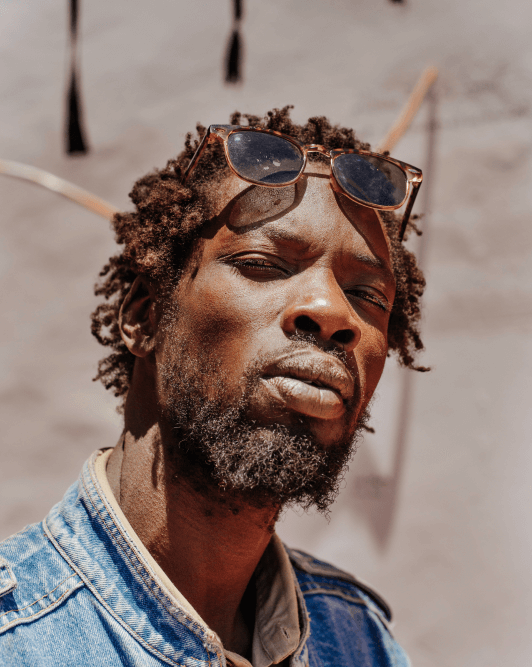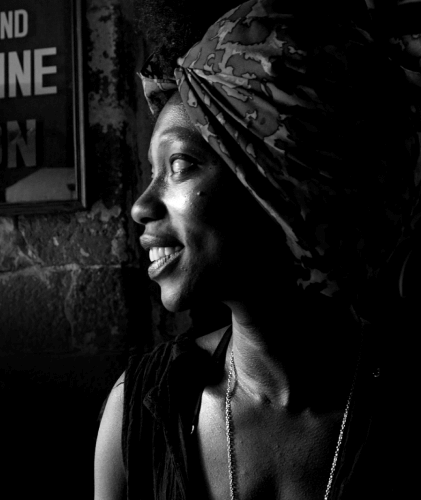Papi
L’Artpreneur
If you’re in Dakar looking for art, clothes, music or parties you will almost certainly bump into Mamadou Wane aka Papi. Chances are that even before you came, you checked the city out on the Instagram feed Dakar Lives and, wouldn't you know it, he and his friends created that too! There sure are a lot of jars in Dakar and Papi has at least one finger in each one of them.
Published 04/02/2020

RU
Tell us about Mwami, your clothing line.
P
Mwami started about four years ago. It was just a logical thing for me, like a need. What am I looking for? Am I finding it? If not, I believe I have a voice, because I see design as language. So Mwami is me answering a question, it’s me saying I don’t want to just be a consumer in life. Anything that I wear, anything that I use has to be beyond just an object. What’s the story behind it, what does it mean? Where is my dollar going? I was not seeing the right fit on the market for myself as a consumer, so I started making things for myself.
RU
P
Yeah, it’s a blessing and a curse. I have this issue that I’ve been dealing with for a couple of years that I’m not creating enough art, because I kind of entrapped myself in this ‘artrepreneurship’. You start with the artwork and you decide that you’re going to extend it and ‘art-erprise’ so you can use your creativity to generate the revenue which allows you in turn to keep the art pure. But it’s so easy to get eaten alive by your own business and you end up with not enough time to paint. I try to create moments for myself where all I need to do and all I have to do is make art. I turn off the phone and go away.
«I believe I have a voice, because I see design as language.»
RU
You take a time-out for art ?
P
Yeah. I go to new places, I have conversations with new people, I eat new food, I take time alone. And, you know, any artist that wishes they were more productive because of whatever they’re dealing with can tell you that the inspiration is not the issue. On the contrary, you have all these ideas that need to come out. It’s only really a matter of sitting down and getting to it.
RU
P
Well, I have a few things that I’m interested in, and I have images in my head. Sometimes full paintings done in my head. What I’ll do is I sketch, I sketch a whole lot, and I use a lot of photography to kind of just build this trove of images that live in my mind for a while. I do a few sessions of live drawing or live painting. Then I start to paint with a very clear image in my head, which develops as I’m painting and turn into something different or something more minimal or more archaic than what I had in mind. So, it’s an evolutive process. It’s not a step-by-step, for sure.
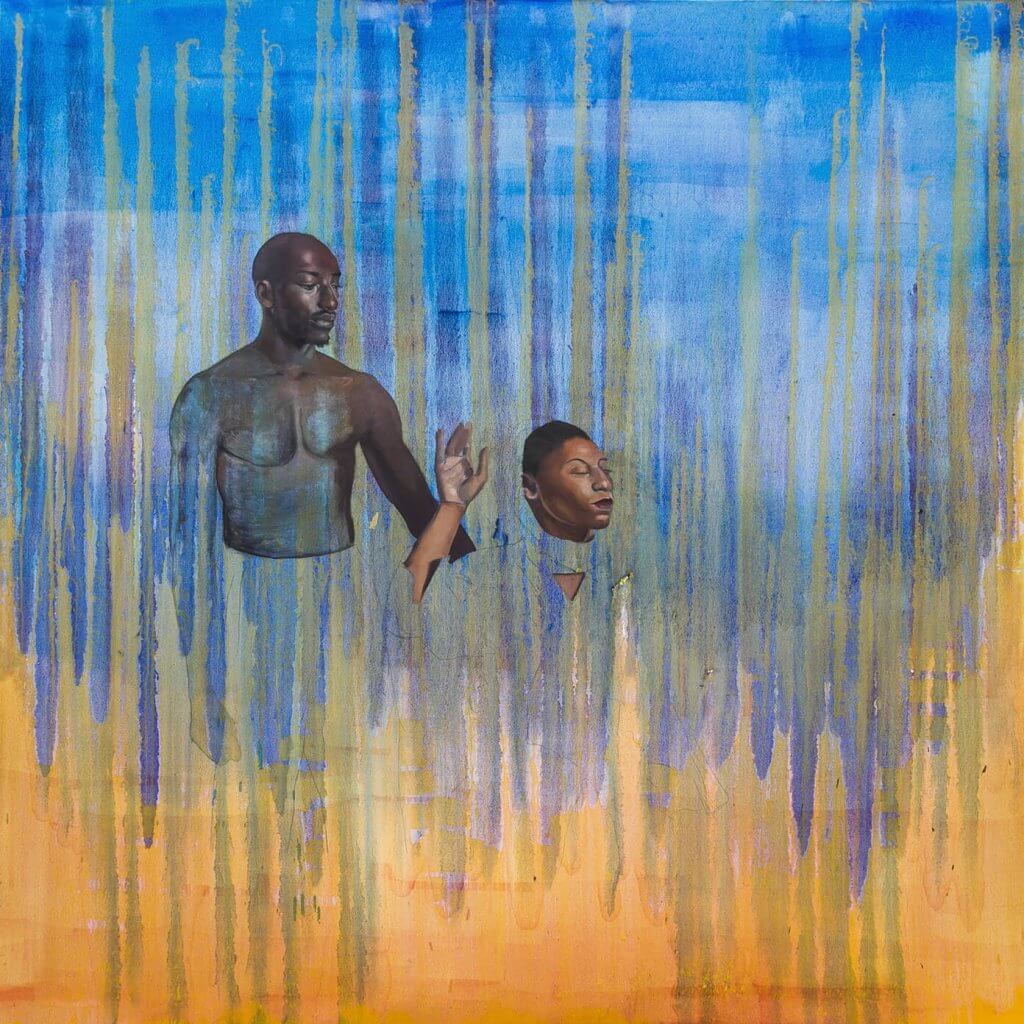
Papi Bermudas II, 2016
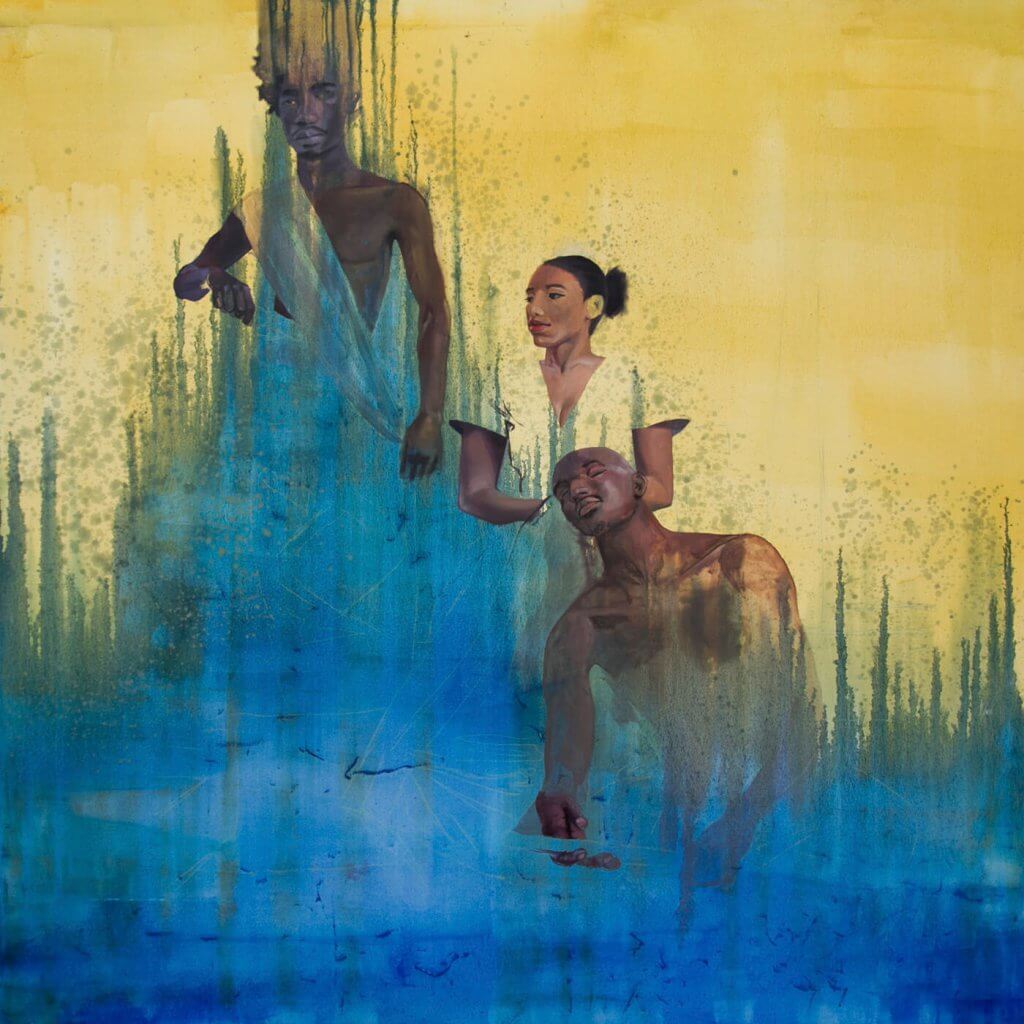
Papi Bermudas III, 2016
RU
P
Am I a struggling artist? [laughs] No.
I think I have this duality of the airy, floaty vibe to me and then there is the very down to earth thing. I think it comes from my background and my upbringing. I sure have moments where it’s total chaos at the studio or I’m on an island, and I find a little bit of paints and I’ll go meet with the local painters. We try to put together a frame and then I’m going crazy with it, just throwing shit all over the place. Then I try to refine it, or I just leave it raw.
Then there will be other moments where I’m doing a residency at a hotel somewhere and there isn’t a speck of paint on the wall or on the floor. Things are very clean. I’m using gloves. I have this beautiful apron that’s embroidered from my clothing line, and a camera is capturing the process. I don’t know, it’s moments. I really just am speaking through pixels or paints or colored mud, and when you’re speaking, sometimes you’re yelling. Sometimes you are speaking very calmly. Sometimes you have this entire speech, an entire monologue prepared in your mind. Most times you’re just free-styling, and that is, I think, why my work looks the way it sometimes do.
RU
P
I think I see that as the same thing, really. It’s the same way for the clothing line. Sometimes I may use traditional hand-done embroidery, and then other times I want to think of seven different ways of having one logo or one pattern done. And I need it done now, and I need an entropy of different combinations of colors and lines. So I’m going to use digital embroidery to make that happen, obviously. I’m going to use a software, and I’m going to layer different patterns until I’m happy with it. I just can’t accept that I have to limit myself in my creativity because I’m confined to one media. That’s not happening. I have one language and multiple words. If that word is oil paint or if it’s spray paint or if it’s a crazy brush or Photoshop, I’m going to use it.
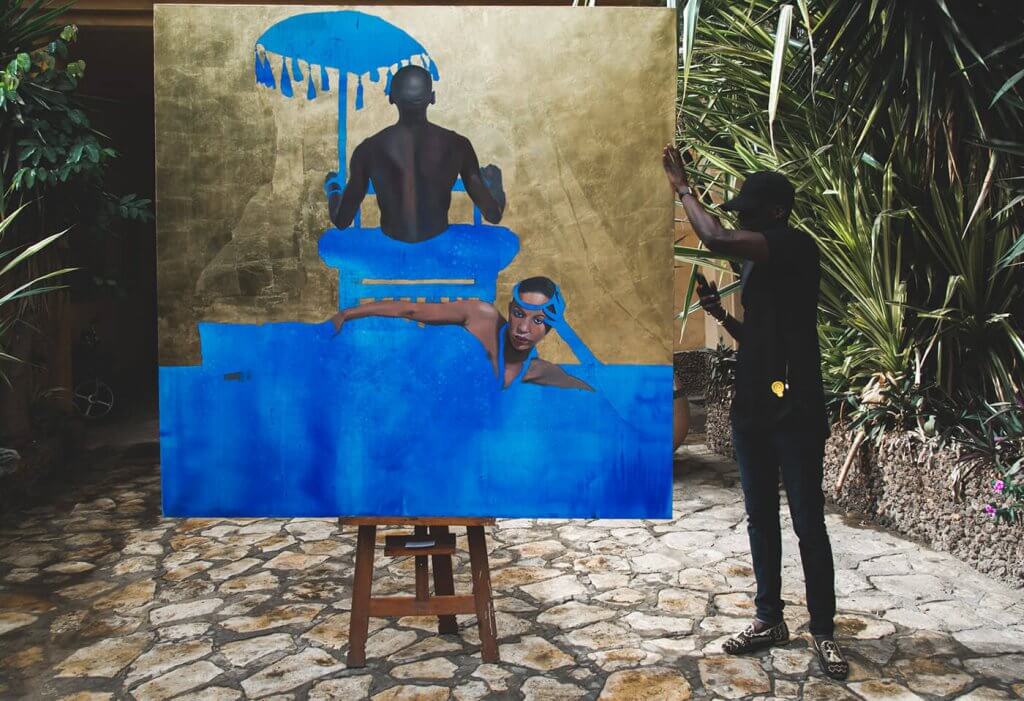
Papi Bermudas I, 2016
RU
P
Absolutely. Especially now that I’m doing all these other things and sometimes It’s just so much and, you know, it’s good to have the one thing that I can always revert to. That I know whenever there’s confusion, whenever it’s cloudy, I know exactly where to go to find clarity. When there’s a lot going on and your processor is jammed, right? You’re all out of RAM, 4 gigahertz isn’t enough and it’s almost like an automatic reflex; Oh, I’ll go paint. I’ll make a sculpture. I’ll take some photographs.
«Whenever there’s confusion, whenever it’s cloudy, I know exactly where to find clarity.»
NS
P
I lived here one year when I was a kid, but I was born in Mali. I grew up there until I was a teenager and then spent the rest of my teenage years in East Africa. Ethiopia, Kenya, Rwanda and after that I went to military school, then art school, in New York and Connecticut. I went for a holiday in Dakar over the summer and I just stayed. I was supposed to be here for a week but, you know, here I am. I’ve been here almost six years now, came here in 2013. I didn’t leave for three years and I haven’t left the continent since.
RU
P
It wasn’t even really a choice for me to live in Africa. It’s just my reality. I grew up knowing that I would live here. It’s just a matter of picking the city. Dakar is just the city that made most sense to me in terms of lifestyle and opportunities and where I saw myself fitting in as an artist and as a young person building something. Dakar is the one for sure. It’s the place.
RU
P
It just is, man. It’s a fact that it’s cool to be an artist in Dakar. We already know about Lagos, we know about Jo’burg, we know about Nairobi and technology and innovation and Addis Ababa and Kigali. But Dakar is this place where it’s very clear that people can see the buzz, they can feel the vibe, they can sense the energy. This is the one, man, this is the one. It might not be the biggest market. You might want to go sell your clothes in Lagos or Abidjan, you might want to go to a festival in South Africa. But you want to create here, you want to exchange with others here. You want to go to a party on the beach or by the monuments. This is where you want to be. Really. This is where it’s happening.
Published 04/02/2020
By Rikard Uddenberg
Photo credits Petrovsky, Per Cromwell, Papi
